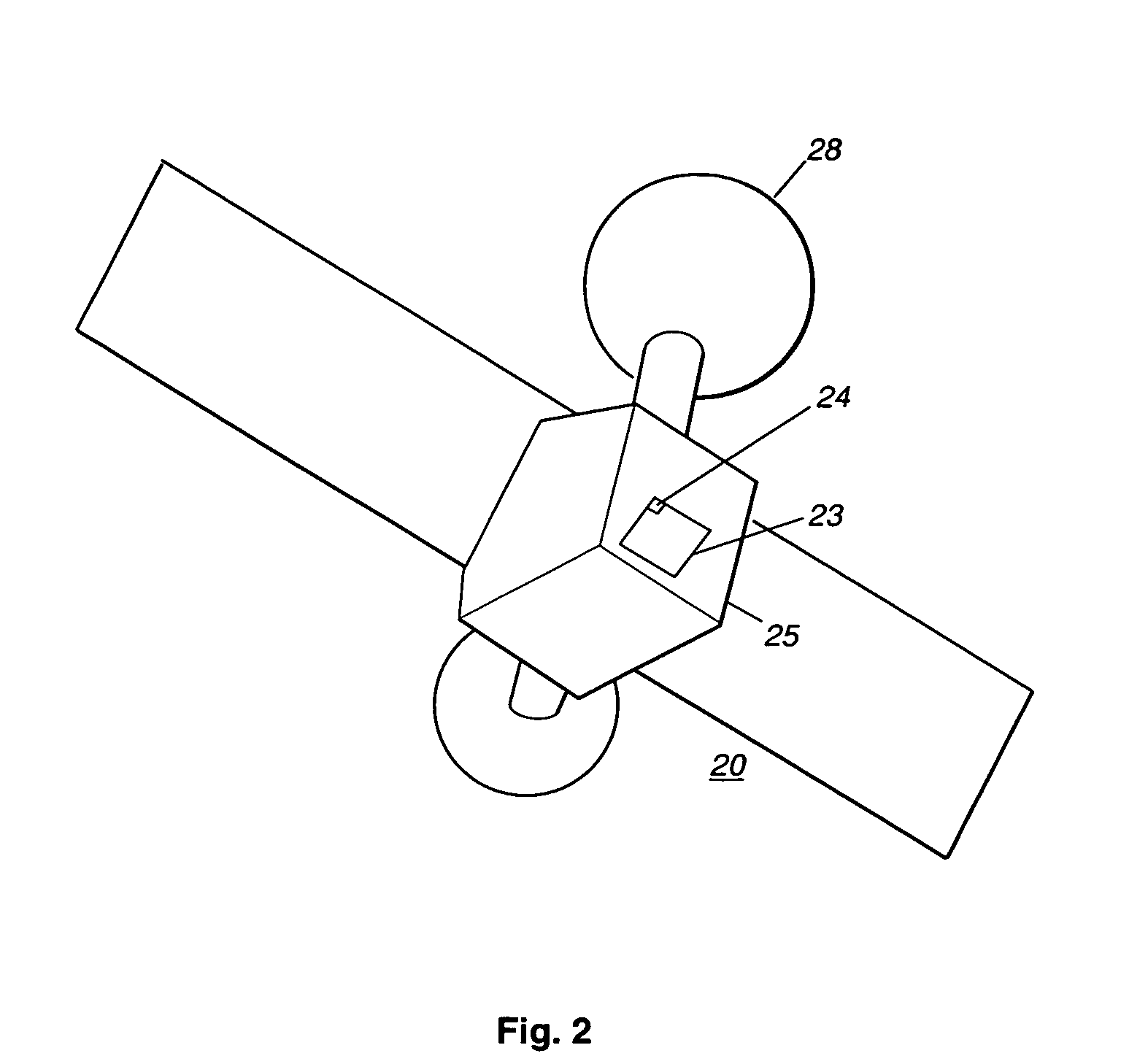Satellite payload data communications and processing techniques
a payload data and satellite technology, applied in the field of satellite communication systems, can solve the problems of high cost, high cost, and large number of expensive facilities, and achieve the effect of reducing cost and increasing speed
- Summary
- Abstract
- Description
- Claims
- Application Information
AI Technical Summary
Benefits of technology
Problems solved by technology
Method used
Image
Examples
Embodiment Construction
Glossary of Terms Used in this Specification
Autonomous Mode: An alternative embodiment where the system is completely autonomous, yet with coverage immunity to failures. Improvements and repairs still can be made on the ground only.
Traditional Ground Stations: In the context of this specification, this refers to large, complex, expensive, facilities used for many years in the past to support communications with various satellite systems.
[0018]Receptor: The preferred embodiment may use, for example, a distributed network of small extremely simple, and relatively inexpensive, unmanned antenna / receivers that are receive-only. (Downlink signal reception, but no uplink signals sent to the satellite(s)). These are technically earth stations, but of a significantly reduced complexity / cost class than the Traditional Ground Stations noted above.
Checksum: This is one of several mathematical means of verifying the integrity of a block of digital data, of varying potency. For simplicity in desc...
PUM
 Login to View More
Login to View More Abstract
Description
Claims
Application Information
 Login to View More
Login to View More - R&D
- Intellectual Property
- Life Sciences
- Materials
- Tech Scout
- Unparalleled Data Quality
- Higher Quality Content
- 60% Fewer Hallucinations
Browse by: Latest US Patents, China's latest patents, Technical Efficacy Thesaurus, Application Domain, Technology Topic, Popular Technical Reports.
© 2025 PatSnap. All rights reserved.Legal|Privacy policy|Modern Slavery Act Transparency Statement|Sitemap|About US| Contact US: help@patsnap.com



